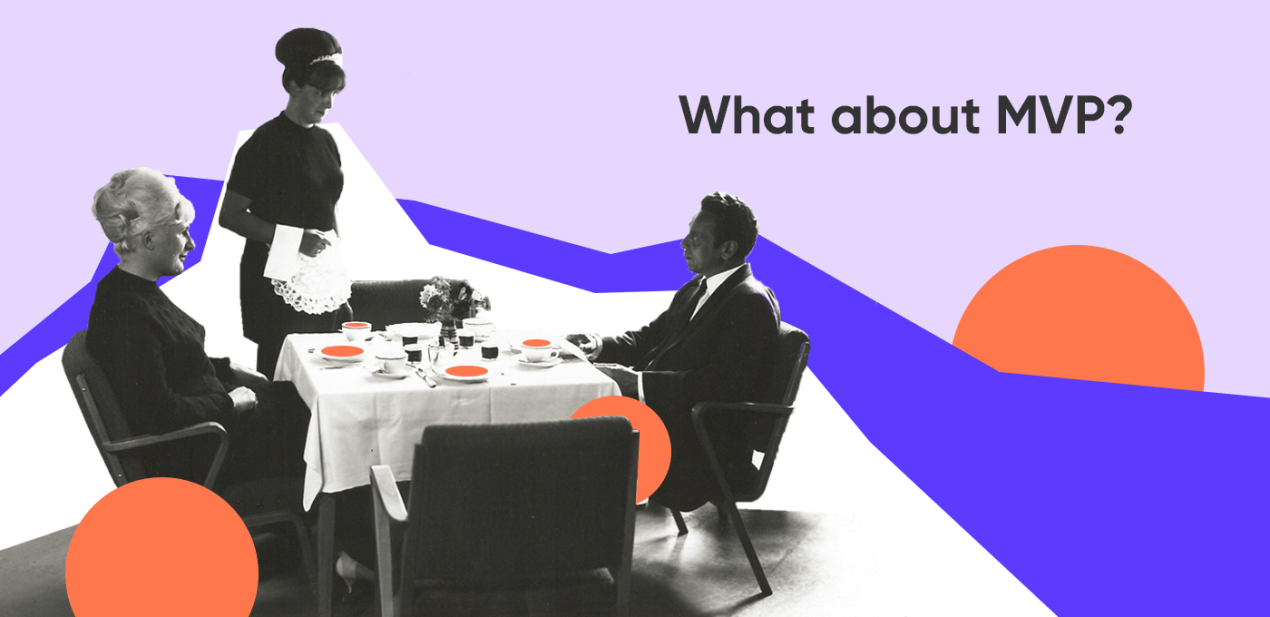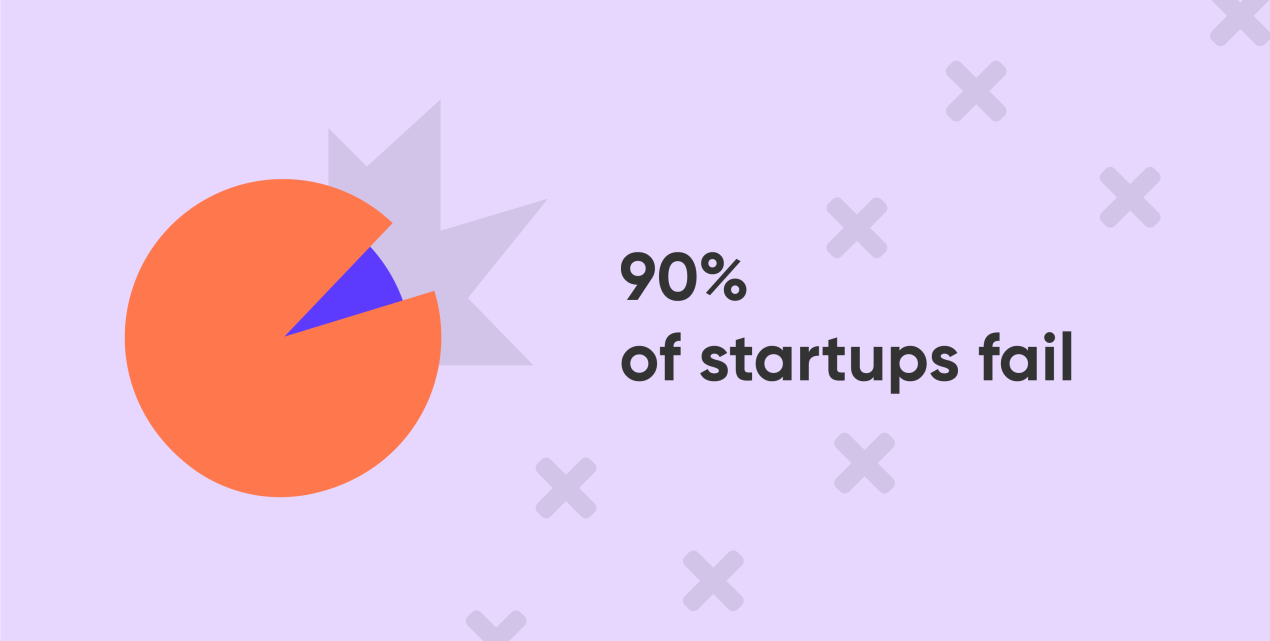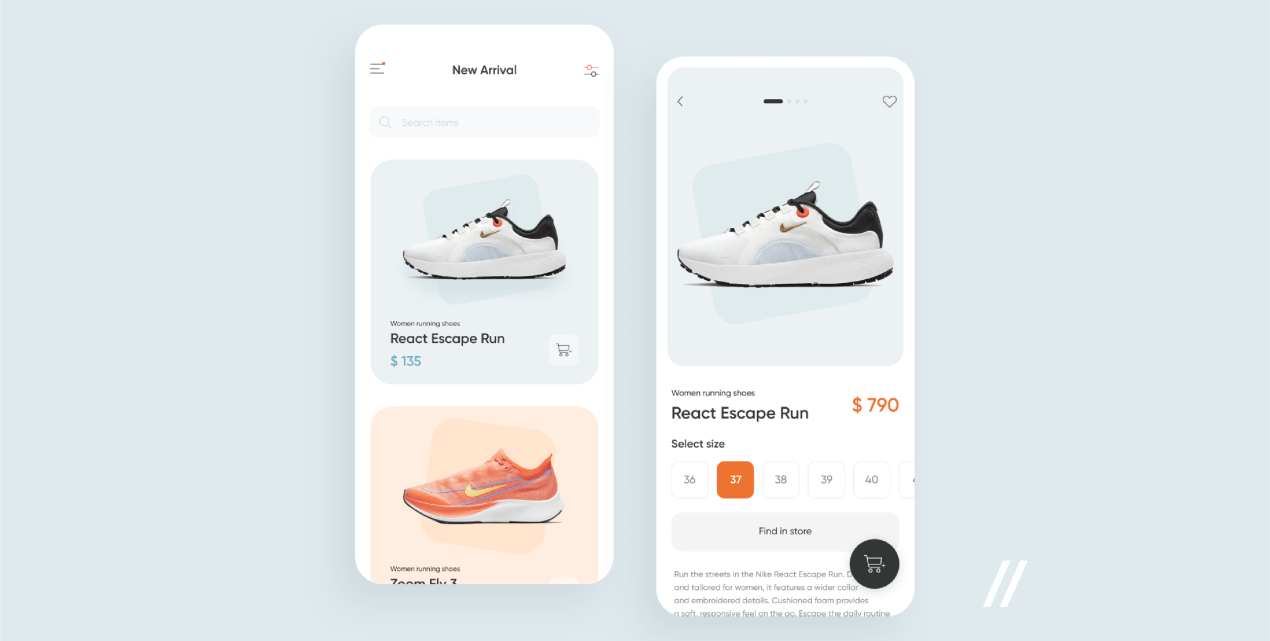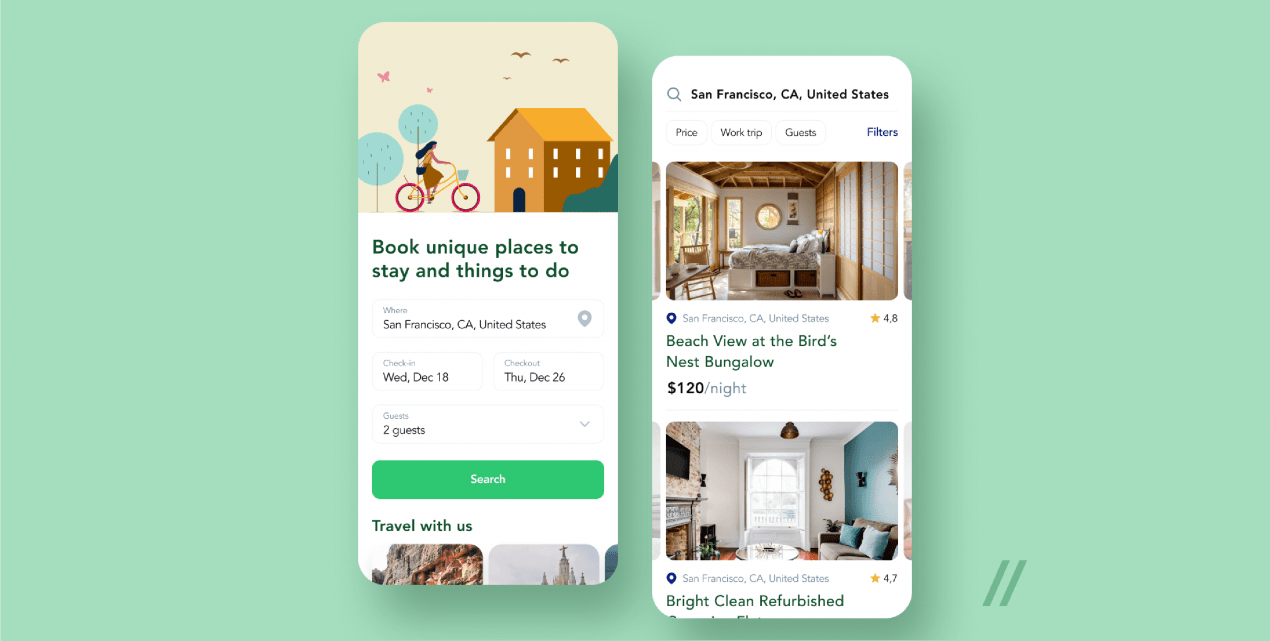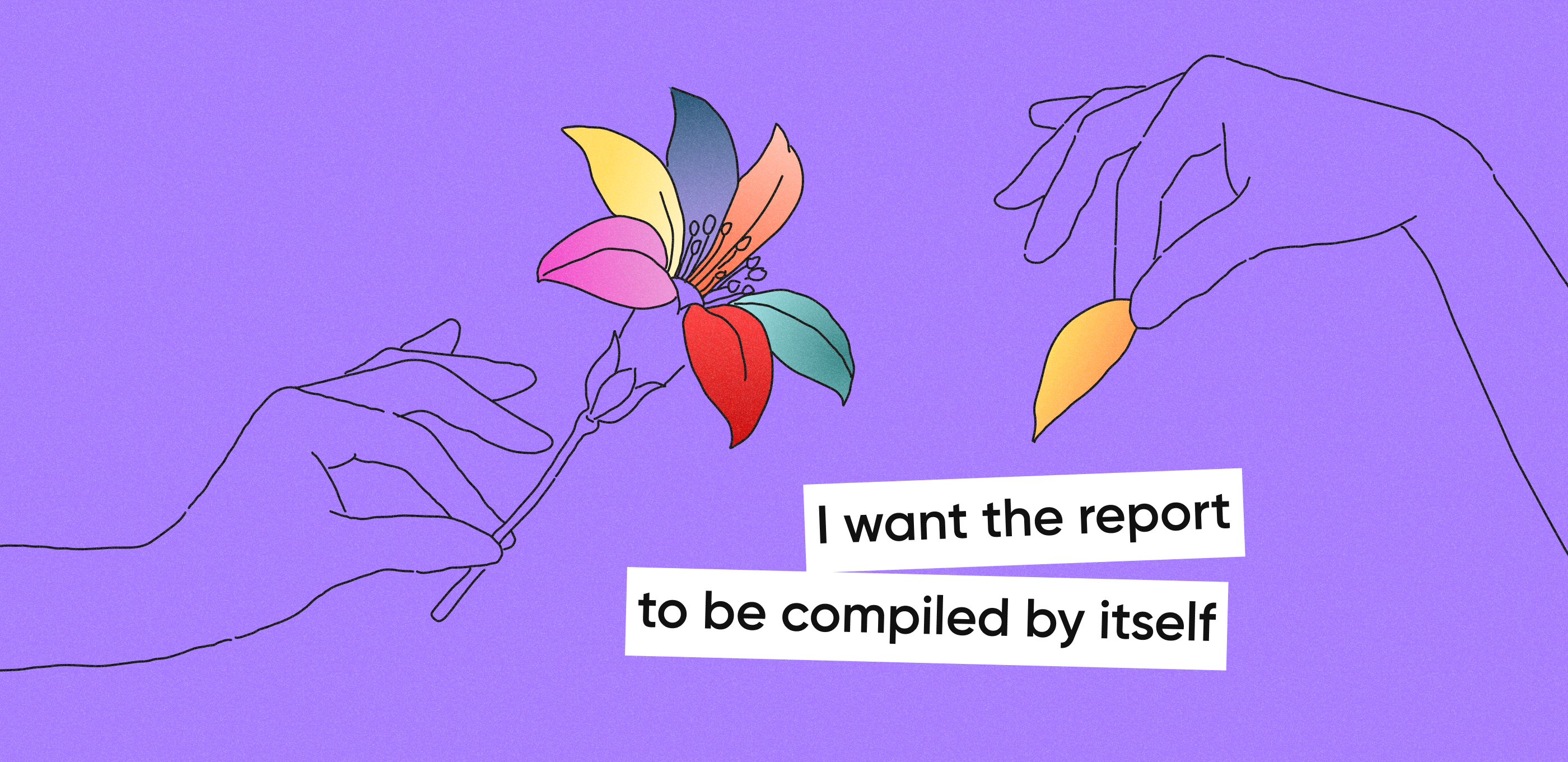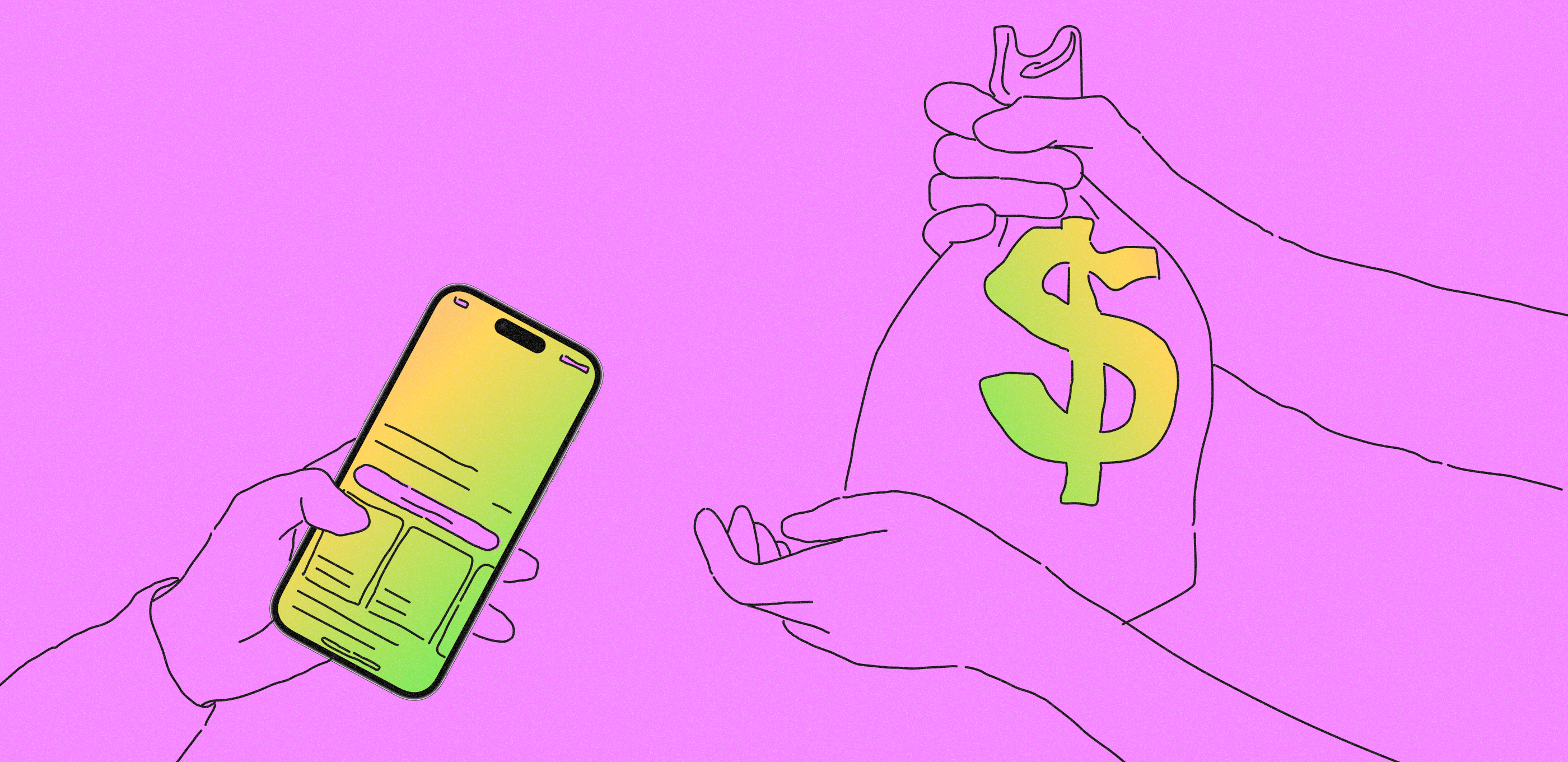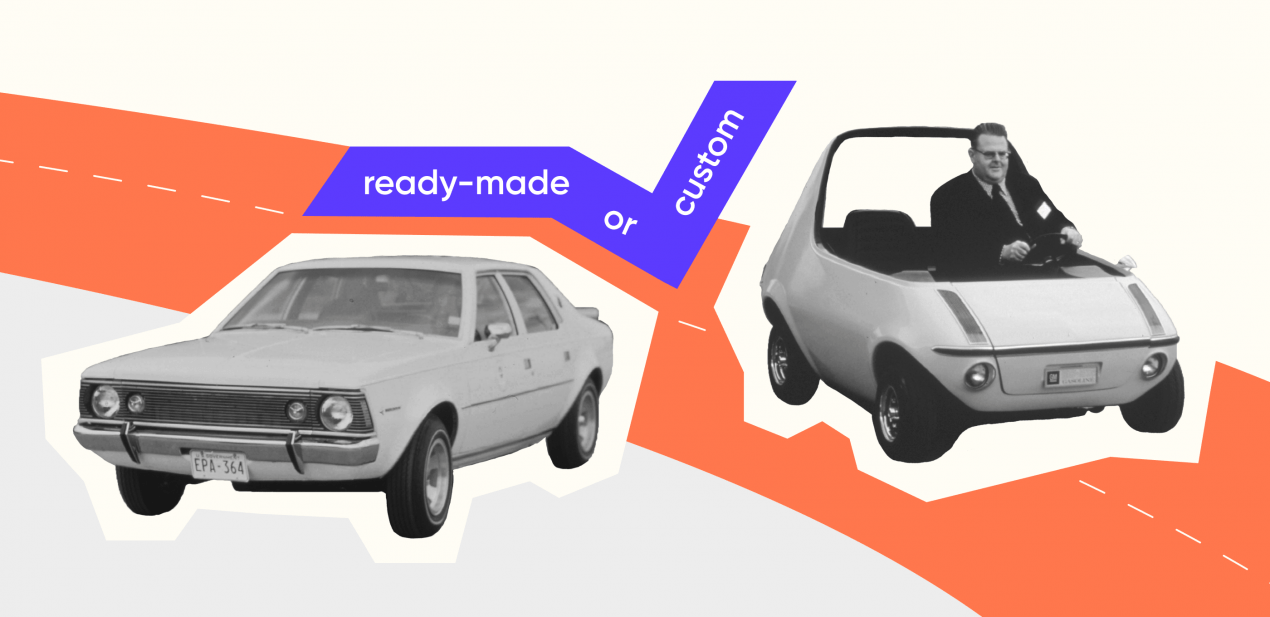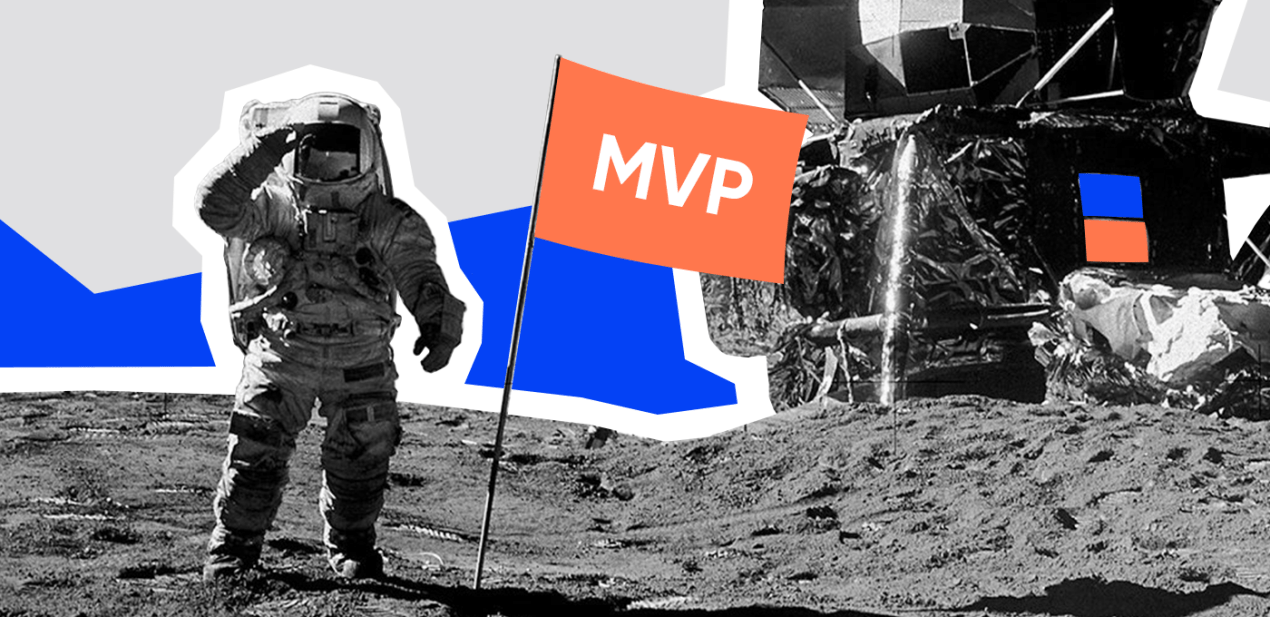There are perfectionists who plan their app too long, burn out and eventually miss the perfect chance to release. There are also haphazards that don’t pay much attention to planning and testing and as a result, launch a raw and sloppy solution. And finally, MVP-fans that carefully plan out their app and test the idea without hanging on to it for too long. They manage to grasp the perfect moment for the release, collect customer feedback, fix minor issues and make their product successful.
What is MVP?
By saying MVP we mean neither paper-based prototypes nor ugly, half-baked technical solutions. A natural question arises from this, ‘Minimum viable product…What is it about then?’ And the shortest possible answer would be ‘it’s about releasing a PRODUCT early and learning from that’.
MVP stands for minimum viable product and it is used to test business ideas. Minimum means simple and clear, while viable means ‘capable of working successfully’ and being sufficient to use. Basically, the MVP development of your app should include all features that help customers go through their journey. For example, if you create an eCommerce app, you should build an MVP that customers can go from the search bar to the cart and make a purchase with.
Okay, MVP is a product. Not a fully-fledged product version that requires years and hundreds of thousands of dollars to get built. MVP is more of a product version that you can build:
- Without breaking the bank. To get started, you don’t have to implement a full-feature product (nothing but a waste). MVP is a cheap way to start learning and experimenting.
- Within the shortest possible time. How long does it normally take? Find an MVP development agency to help you build an MVP within 3 months — it will be perfect!
The common misconception is that MVP is a prototype of the future app – that is not correct. MVP if the first fully-functioning version of a new product with a focus on must-have features.
Let’s dig a little bit deeper and figure out what ‘M’ in ‘MVP’ means.
In the beginning, we said that ‘M’ stands for ‘Minimal’. So, yes, you need to build a minimal product version. In order to build such a product, it’s important to start with setting priorities. In terms of functionality, the MVP concept revolves around delivering only must-haves. To get to market faster, you deliver only those features that represent core user flows and bring the most value to end-users. As for should-haves, nice-to-haves and won’t haves (they might become must-haves later on) — all additional features will be added based on real user feedback — don’t ever try to make them gut feeling-based. We always say that every startup needs to start with an MVP development. Why, you ask? Let’s see!
We always say that every startup needнs to start with an MVP. Why, you ask? Let’s see!
Why is MVP development important?
The MVP app development stage is crucial for future success, since 90% of startups fail because they don’t compile market needs. No matter how genius your idea is, if you don’t do preparatory research before development and get to know your target audience, nothing is going to work.
MVP is a fully-functioning solution with key features of the app. MVP development allows you to:
1. Get the app right into the users’ hands and gain initial feedback. Does it work the way it’s easy to get used to? What features to include in the upcoming release of your MVP? What to remove from the product backlog before development? By giving users something they can play around with, you increase the chances of getting honest reviews. Paper prototypes aren’t that effective in this matter.
2. Check technical feasibility. You don’t have to build a feature-blown app to verify implementation complexity, scalability and potential needs for rare skills. This, in turn, will help you in development of a stable, functioning product version that brings value right from the start.
3. Present the idea to investors in order to gain initial funds and support of your development process. To increase the chances of success, ensure that it’s possible to back up your MVP with an initial business plan and a marketing strategy.
4. Gradually add new features during the development process and make regular updates. MVP is an iterative process of improvements, so make sure you’re following MVP Agile development methodology. The flexibility of Agile is the main advantage early-stage startups can rely on when competing with huge corporations for a piece of market share.
The full cycle of launching an MVP app takes around 3-4 months from an idea to the final release. As a startuper, you can either develop it yourself, if you have enough technical skills, or outsource it to a team. We highly advise choosing the second option, because just delivering an MVP is not the end of the road. After collecting feedback, the next stage will be to make changes to the solution according to customers’ experience, and the professional team will help you with the development. Plus, while they are working, you can dedicate this time to other operational tasks, such as deciding on marketing strategies and financial models.
How to develop an MVP?
Step 1. Polish your idea
At this stage, bright-eyed entrepreneurs come up with groundbreaking product ideas for MVP development. Why not build the best closet organizing app? Or maybe think about the development of a solution that helps to drink more water? Deliver a product that prevents food waste? Well, yes, this is about determining the problem that needs to be solved and finding the best possible solution to it.
Before jumping to the execution phase, answer the question “What customers’ problems will your app solve?” to define what helps you stand out and make your idea special. Your app should be beneficial to customers and be in-demand. Try to define the benefits users will receive from your solution and fit it into 1-2 sentences.
Here is an example from our experience of MVP development. We worked on a sneakers store solution for our client. Their idea was to unite all new releases from different brands in one app with filters and a user-friendly menu. Their app saves users time and helps them follow fresh arrivals without installing dozens of apps of other brands and subscribing to a newsletter.
The main idea of your app should not necessarily be complicated and should not exceed a couple of sentences. For this sneaker store, the solution will help users follow new releases.
Step 2. Research your audience and competitors
For the second step before development, define your target audience as precisely as you can. Imagine that you draw a portrait of a future customer in detail. Think about how old they are, where they live, what they are doing in their free time, etc… These answers will assist in choosing a marketing strategy and channels after the development process as well.
Then move on to a competitors’ analysis. Make a list of the main players on the market that work with similar target audiences, break down their business models and define their pros and cons. Our advice is to be unbiased – there is no perfect company, as everyone has their own advantages and disadvantages.
Step 3. Map the user’s journey
If you decide to hire a professional team for the MVP development process, starting from this stage, they will assist you with the release. First, you need to think about every step a customer will undergo to accomplish their goal (solve their problem from step #1) and map this path. Every following step should be logical and clear. The journey of the user will be the main guideline for developers and designers when choosing what features your MVP app will need.
Step 4. Choose key features
After you create a list of features users will need on each step of their journey, prioritize them from must-have to will-not-have. All must-haves will be in your MVP, and the rest you will have the option of adding in the future.
For some types of MVPs you will need to choose only one core feature to test the idea and technical feasibility. But we will get back to this later.
Step 5. Develop MVP
This stage includes UI/UX design and development. Let’s dig a little deeper into each part of MVP development.
The most interesting part of the process of MVP development starts here. It takes lots of thinking and comes along with the first tangible step to MVP realization. It consists of several very distinct actions of development and design: prototyping, architecture and navigation planning, product visualization (Branding + UI).
For MVPs, the core UI/UX design principles are as follows:
- Avoid reinventing the wheel. At the MVP development stage, there’s no need to care much about delivering something ‘very unique’. To speed up the release date, opt for a basic design that conveys the product message, looks aesthetically pleasing and easy-to-get.
- Steal. Imagination-based design with ‘Unusual’ navigation — this isn’t what encourages habitual use and brings thousands of happy users. Don’t make users learn anything (we all hate learning new things). The easiest way to come up with a solid design is learning from more established competitors. Rely on their app user journeys, and UX patterns — it decreases the amount of design work and hence saves you a lot of time and money.
It’s barely possible to find users willing to use badly-designed products. You might think something like ‘Well, sharing a badly-designed solution is not okay. What will be considered a good design then?’ And we’ll tell you.
For MVPs, a design that clearly explains the core product offering, looks clean and intuitive — this is good!
Development
Technical implementation and development takes more time than generating ideas and designing them. At the development stage, the ‘done’ UI/UX design becomes a digital reality. Before the devs delve deep into MVP development and programming, take into account that:
- Nice-to-haves aren’t included in the product backlog of the development process. We’ve already said that startup MVP development is all about delivering must-haves. We’ve already said that startup MVP is all about delivering must-haves. Ensure that you can differentiate the bells and whistles from ‘Without this, the app doesn’t work properly’.
- QA testing is a part of the development process. Test the app after each MVP development iteration to increase the chances of revealing possible bugs before launch.
- A popular tech stack is used in the development process. Go with technologies that have a stable dev community. This way, the devs won’t have to write basic product functions from scratch —- they can save days or even weeks of work time by integrating ready-to-use solutions into your MVP.
Getting MVP designed, developed and tested doesn’t mean that you’re done. Once you release the app and share it with users after the development stage, a huge amount of work will be required. Fixing bugs, polishing UI/UX, gathering feedback, doing A/B tests, adjusting initial marketing strategy.
In fact, ‘I get my MVP done’ is the very beginning of the startup journey after the development process — if you want to build your dream product, be ready for that.
What kind of MVP app do I need?
What is the best way of MVP development? To be honest, there’s no such thing as a standard MVP development practice — the decision of choosing the best approach mainly depends on product owners’ preferences and possibilities. Let us share a few basic ways to rapidly test product ideas before development. Pick one that you can put into practice with the least amount of effort:
Landing page
You might think something like ‘Hey, you told me that MVP is first and foremost a product’. And you’ll be right. However, it’s possible to capture initial leads and measure purchase intent without building whatever. It means that you don’t have to hire an MVP development company to start moving toward a product — a simple landing page might become the perfect pre-MVP.
Main tips:
- Make it look aesthetically appealing. It’s already 2024, so come on! Without a sexy look, it’s barely possible to grab anyone’s attention!
- Explain all the features from the user’s perspective. Rather than focusing on words that ‘sell’, provide real-life scenarios i.e cases how users can benefit from using your product.
- Ask people to share their emails. Once the MVP is live, you’ll be able to inform early adopters about that.
Getting started with a landing page development — this is exactly the Buffer’s story.
Back then, it looked this way:
Next, they didn’t switch to product development. To determine whether people would pay for that, they added plans and pricing details before the development process.
So, this zero-risk MVP helped them gain the initial user base, measure purchase intent and shape product features for upcoming development.
Concierge MVP
MVP development using this type serves to test your hypothesis to answer one simple question: “Is your app relevant to current market needs?”. The basic principle of the Concierge MVP is to replace all parts of the app with humans where it is possible. While serving your customers manually (exactly like a hotel concierge does), you can learn more about who they are, why they buy your product and what questions they ask.
This type of MVP development is perfect for collecting real customer feedback.
With this type you don’t even need MVP development. For instance, if you want to develop a platform for buying music festival tickets, with the Concierge MVP, you will have to act as a sales manager and manually manage all tasks:
- generate festival selection;
- send it to them;
- see their readiness to buy;
- process orders;
- issue tickets;
- send them out to a user’s email.
Yes, it might sound exhausting, but it’s a brilliant way to interact with customers personally and build a budget-friendly MVP with minimal features.
The Wizard of Oz MVP
First things first. It has nothing to do with a world-famous movie for kids. The Wizard of Oz MVP is when users think they use a real, fully-functioning product. The truth is that a ‘fully-functioning product’ is just an illusion — behind the curtains, the core functions are delivered manually. In contrast to the Concierge MVP type, the human is hidden here, as they operate only at the backend. The customers don’t know if they are interacting with an automated algorithm or a human as long as their problem is solved.
Wizard of Oz helps to evaluate the idea as well, but it also mimics user experience and tests the representation of the solution itself with a limited number of features.
The benefits of starting as the Wizard of Oz are:
- Mimicking a functioning system is much cheaper at the early stages. If you can do it yourself, it won’t cost you a penny.
- The full product version takes time to get implemented. With the Wizard of Oz, you can figure out how a mature product will behave within a few weeks after development.
Let’s move from theory to practice. Say, you plan to build an app that aggregates information about the car market. Rather than implementing an automated algorithm from scratch, you can validate the idea by searching for cars on your own — you just browse different car websites and then share options that seem to be most relevant to specific categories of users. Simulation or automation — for MVP development this doesn’t matter much, does it?
ZeroCater, a food service company, was initially launched as the Wizard of Oz.

Rather than building a fully-customizable solution, they got started with a simple spreadsheet and manually ordered food from local restaurants
Now ZeroCater is an all-inclusive service with personalized menus and hand-crafted meals.
Single-feature MVP
This approach to MVP development is all about being truly minimal. To build this kind of MVP, you pick one painkiller feature i.e what brings the biggest value to users and present it to the target audience. Having only one feature to focus on results in faster time-to-market and lower implementation costs.
Single-feature MVP should correlate with your unique selling point. It will help check the technical feasibility and can be used for fundraising after the development process.
Take a look at Spotify:
Rather than jamming random features right from the start, they validated the idea by sharing just one key yet complex functionality — music streaming.
Piecemeal MVPs
Just like the Wizard of OZ, this MVP development type is also based on simulation. The difference is that missing features are emulated by third-party services and tools.
You definitely know Groupon, don’t you? ‘Rolling out a piecemeal MVP’ — this is exactly how they got started.
Rather than developing a complicated product with lots of various features, they set up a WordPress blog and sent coupons to a mailing list with Apple Mail. Launching this low-tech MVP verified that the idea was worth pursuing.
What’s after the design and development
After the design and development process of your MVP the work isn’t done yet. After the launch of the project it’s vital to collect and analyze the feedback. This step can’t be skipped because this information helps startups choose the direction of their future improvement.
All the data collected on this stage helps understand the perspectives, generate new ideas or develop the strategy based on facts, not just on assumptions.
After the development and testing of your MVP you have two ways: continue to improve your project or pivot and change your focus from one project idea to another. Sometimes it happens that after project research, startups understand that their idea is not relevant. In this case you can pivot and change the main idea. You can simply adjust the direction of improvement if the hypothesis of the project’s importance isn’t confirmed. It helps startups save money and spend it on successful projects.
For example Twitter was a podcast platform initially but the company didn’t want to have such a great competitor as iTunes and pivoted.
If your startup fails, you can revive it and go back to the previous stages. It would help you understand which steps were wrong. Changing the idea is a risk but there are risks in every startup.
Conclusion
There’s no doubt, any startup should begin with the business idea validation. That’s why the MVP development stage is crucial and why you can’t skip it.
Speaking about types of startups in the world. We recommend not being a perfectionist or a total haphazard. Be an MVP-fan and don’t hold onto your idea for too long. Test it and launch before someone else does it first.
As soon as you are done with steps #1-2, we can jump in and help you with the rest: map the user’s journey, choose key features and the right MVP type, develop the app and release it. At Purrweb, we help startuppers with steps #3-5, accompanying the project until the release. Moreover, we can provide additional info on how to prioritize features and what techniques can be used for it. If you delegate the MVP development to us, you will have plenty of time for PR and investors, while we guarantee your app will be well-thought out and cutting-edge.
To find out what MVP suits your idea the best, fill in the quote here.

